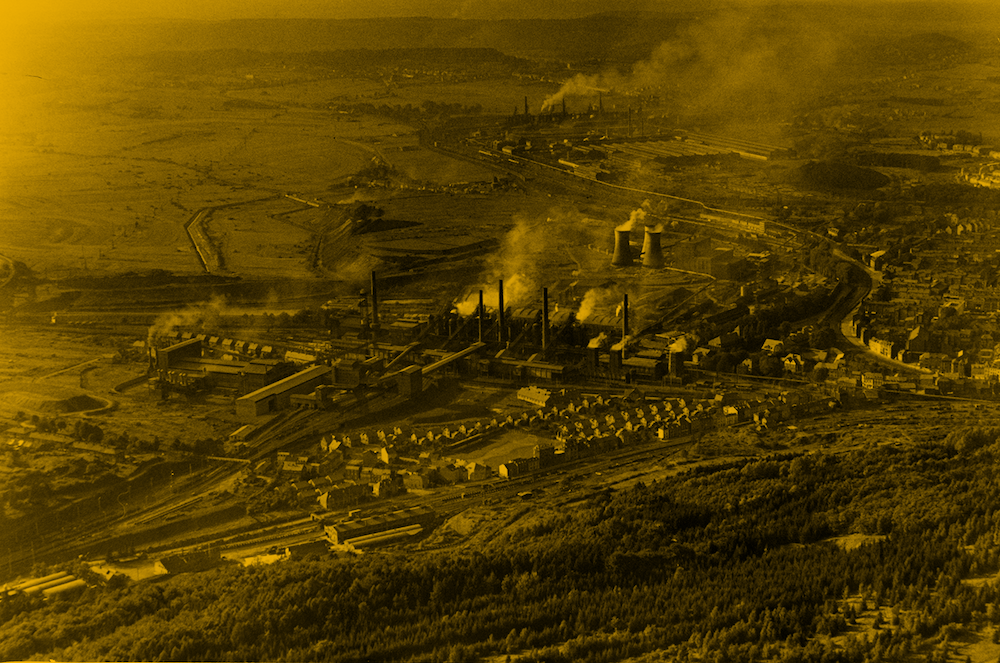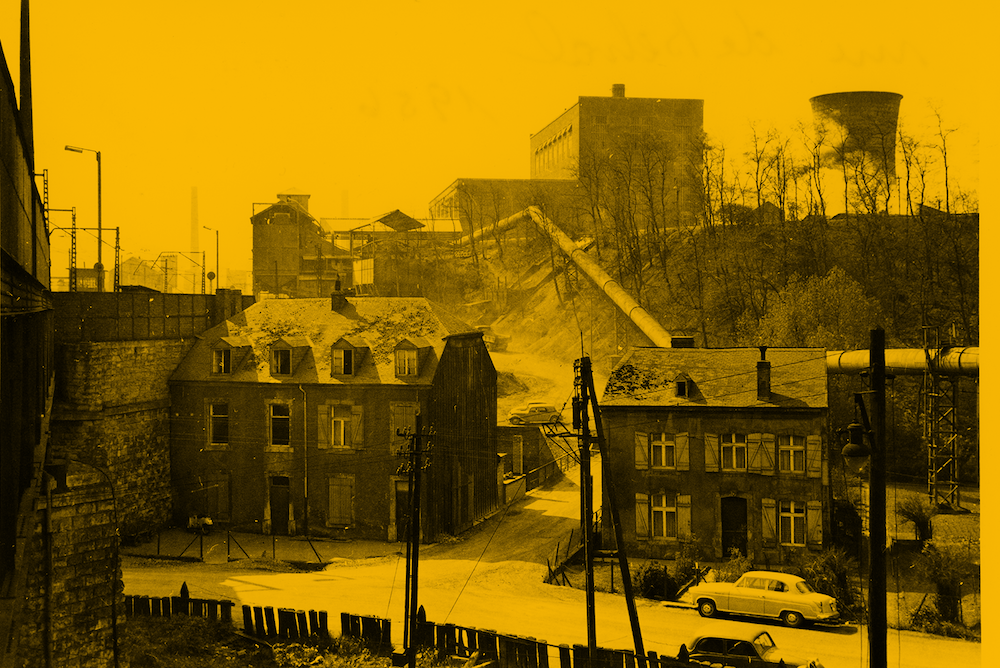*Photographs from the Archive of the City of Esch-sur-Alzette
About LuxTime
LuxTime is an Audacity project whose main objective is to build and visualize different datasets that will include information from three different fields and scientific perspectives, namely eco-hydrology, environmental cheminformatics and history.
LuxTIME will be using the industrialization of the Minette region, as a testbed for methodological and epistemological reflections on how to study the impact of environmental changes on the health of the local population in a long term perspective. By mixing ‘contextual information’ based on archival evidence with ‘scientific evidence’ deriving from chemical, biological, or medical investigations, the project explores new ground in interpreting “big data of the past” in a truly interdisciplinary setting.
The Belval-case is meant to critically test the analytical potential of a multi-layered research design which – this is the mid-term ambition – be expanded into a national case study; that is the building of a real “Luxembourg Time Machine” including many different kinds of data from many different kind of institutions.
About European Time Machine
The ‘Time Machine: Big data of the past for the future of Europe’ project will create advanced AI technologies to make sense of vast amounts of information from complex historical data sets. The project is funded by the European Commission through the Horizon 2020 programme.
Time Machine is aiming to join Europe’s rich past with up-to-date digital technologies and infrastructures, creating a collective digital information system mapping the European economic, social, cultural and geographical evolution across times.
This large-scale digitisation and computing infrastructure will enable Europe to turn its long history, as well as its multilingualism and interculturalism, into a living social and economic resource.
About the Institute for Advanced Studies
The University of Luxembourg (UL) is a research-oriented University in a country that nurtures and promotes its research and innovation ecosystem, aiming at a knowledge-based economy at the heart of Europe.
With the ambition to leverage its research performance and intellectual environment, the UL established the Institute for Advanced Studies (IAS).
The IAS – Luxembourg has four main missions:
- to leverage bold and interdisciplinary research at the very forefront of science.
- to symbolize UL’s values of excellence, interdisciplinarity and internationality.
- to build bridges in-between the UL community, international visitors and the society
- to contribute to the attraction and retention of international talent.
One of the funding instruments within the Institute for Advanced Studies, the Audacity instrument, funds collaborative projects at the forefront of interdisciplinary science, which have a distinctly exploratory and audacious character, like the Luxtime machine project.
Contributors

Laurent Pfister (LIST)
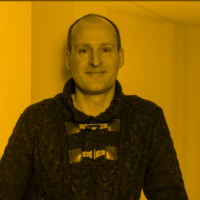
Christophe Hissler (LIST)

C2DH
The Luxembourg Centre for Contemporary and Digital History (C²DH) is the University of Luxembourg’s third interdisciplinary research centre, focusing on high-quality research, analysis and public dissemination in the field of contemporary Luxembourgish and European history. It promotes an interdisciplinary approach with a particular focus on new digital methods and tools for historical research and teaching. The C²DH is engaged in a vast variety of different research projects, at national and international level.
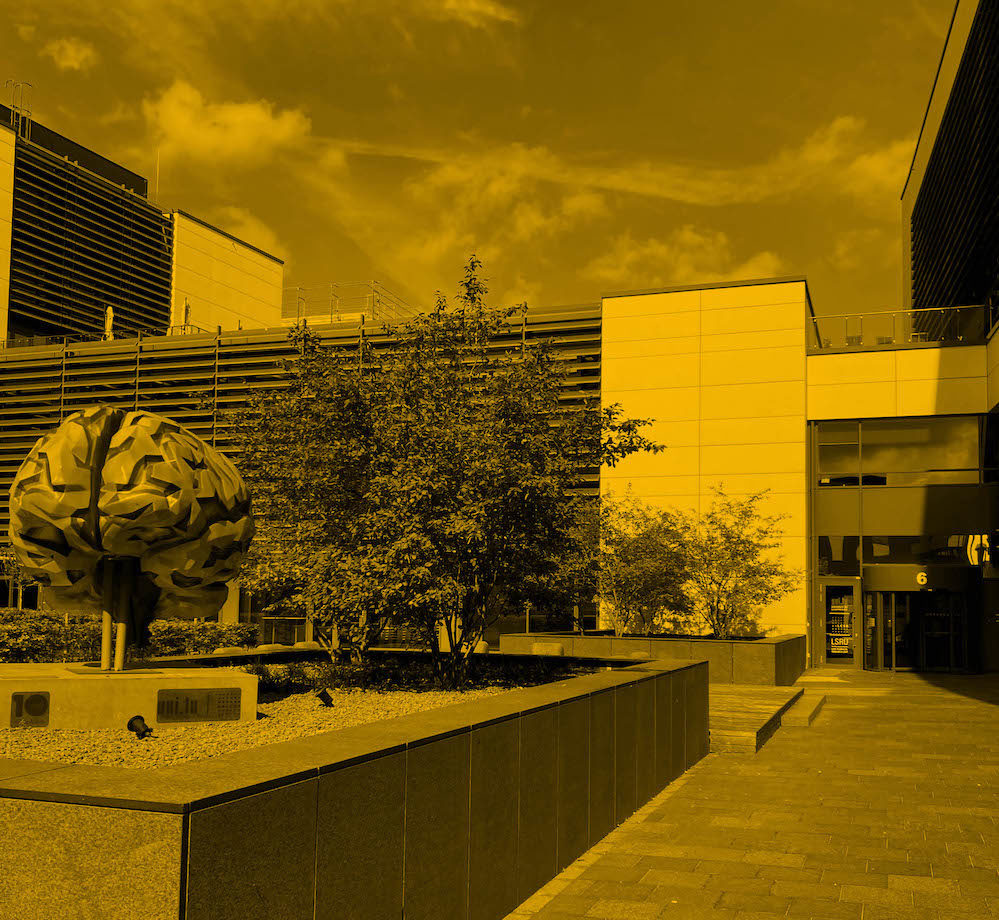
LCSB
The LCSB is accelerating biomedical research by closing the link between systems biology and medical research. Collaboration between biologists, medical doctors, computer scientists, physicists, engineers and mathematicians is offering new insights in complex systems like cells, organs, and organisms. These insights are essential for understanding principal mechanisms of disease pathogenesis and for developing new tools in diagnostics and therapy.
The Environmental Cheminformatics (ECI) group focuses on the comprehensive identification of known and unknown chemicals in our environment to investigate their effects on health and disease. The Bioinformatics Core (BioCore) focuses on workflows and pipelines to allow researchers to efficiently manage, analyse and interpret their data within and between experimental, theoretical-computational and medical-oriented groups.
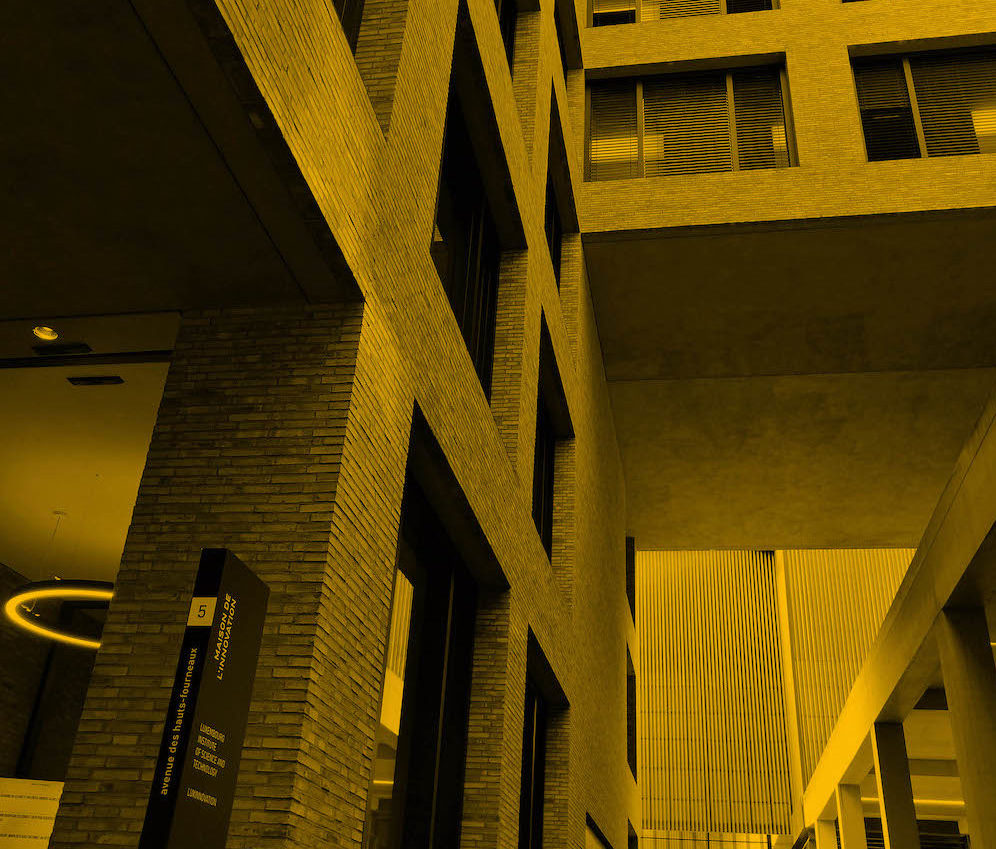
LIST
The Luxembourg Institute of Science and Technology (LIST) is a mission-driven Research and Technology Organisation, active in the fields of materials, environment and IT.
The Catchment and Eco-hydrology research group focuses on a holistic understanding of intrinsically coupled hydrological and human systems. They target a better understanding of eco-hydrological processes controlling global hydrological and biogeochemical cycles, vegetation and sediment dynamics, pollutant removal, and ecosystem resilience. The group relies on their competence in hydrology, geochemistry, sedimentology and environmental systems engineering.

There is hard evidence that global change is having severe and persistent impacts on environmental systems – eventually compromising socio-economic development in many regions of the world.
Luxembourg is far from being sheltered from these threats. There is an pressing need for a better understanding of the involved processes, interactions and feedbacks, both via a better understanding of past evolutions and the development of new prediction tools. Here, we propose the “Luxemburg Time Machine” (LuxTIME) project for exploring radically new ways for analysing and interpreting factual evidence of the past. We intend to build an interdisciplinary framework for investigating “big data” of the past.
By building a digital dataset that will include information from three different fields and scientific perspectives, LuxTIME will use a local showcase, the industrialisation of Belval / Minette region, as a testbed for methodological and epistemological reflections on how to study the impact of environmental changes on the health of the local population in a long term perspective.
Industrial History of the Minette region
How it all started….
Since the Celtic era mines have been exploited in Luxembourg. In 1609 the first blast furnace was built in Dommeldange. Pig iron was processed to wrought iron which was further used in forges. The refined iron industry was prosperous until the 1840s. However, there were no export markets, communication means and money and industry stopped in 1862. Other countries were a few steps ahead such as England, with its economic and technical evolution in creating puddled iron. In the 1850s iron ore from the extension of the Minettes Basin of the Lorraine were re-discovered in the south of Luxembourg. At the end of 1859, the first rail transport was introduced. Those factors contributed mainly to the resumption of the steel production. In 1870 the first furnaces were constructed in Esch-sur-Alzette starting the production of pig iron. The invention of the Bessemer process to produce steel replaced the puddling of iron and since 1879 phosphorus was removed from the pig iron using the Thomas-Gilchrist process. In 1886 the first Thomas-Steel was produced in Dudelange, this ushered in the new steel era in Luxembourg. The country became prosperous in that time and even had to employ foreign labour. Around two-thirds of the working population was occupied by steel industry and in the mines. Many social institutions were built, creating a very advanced social legislation for an industrial country. Being a member of the German Zollverein, it was easy to find markets and get a regular coke supply. However, this ended with world war I in 1914 and Luxembourg had to find new markets. Research was done to modify their steel and save coke, as the consumption of the furnaces exceeded the deposits and foreign material had to be imported from France and Sweden. Moreover, the mineral deposits were limited geographically and the iron ore of the Minette Basin was of low quality. Consequently, the main part of iron ores processed was imported.
Steel production in Belval
The steel era in the Belval region was from 1907 to 1997 with Esch-sur-Alzette being the production centre of the ‘Aciéries Réunies de Burbach-Eich-Dudelange’ group, better known as ARBED. There were three main plants: ARBED ESCH, ARBED BELVAL and ARBED TERRE ROUGE connected via railway, electricity and furnaces.
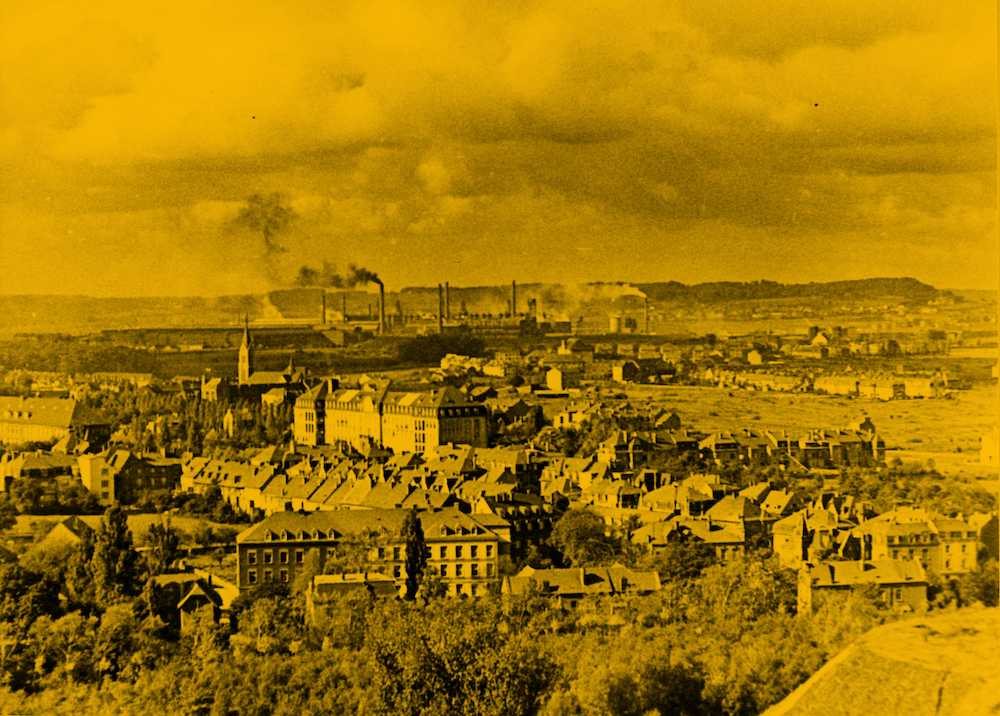
The end of the steel era
In World War II many steel workers were deported and imprisoned by the Germans. After the liberation 1944 many new orders by the American Army for steel beams came in, keeping the production going. The lack of raw materials and electric power, disorganization of transport and instability of prices forced Luxembourg in 1945 to reduce the production to a minimum. ARBED kept the steel industry going between 1946 and 1974 in the “Les Trente Glorieuses”, increasing the production and expanding to other countries. In 1974 there was a big crisis in the iron- and steel industry resulting in many plants being closed. The last blast furnace was shut down in 1997 in Belval; nowadays electrical procedures are used for steel production in Luxembourg by ArcelorMittal.
This blog aims to collect all the data visualisations of the project, as well as the data sources, the process of creating and interpreting the data, the analyses and the team’s conclusions. Here we will offer the possibility to explore, discuss, share and collaborate on each of our visualisations.
We are currently working on the first data visualisations.
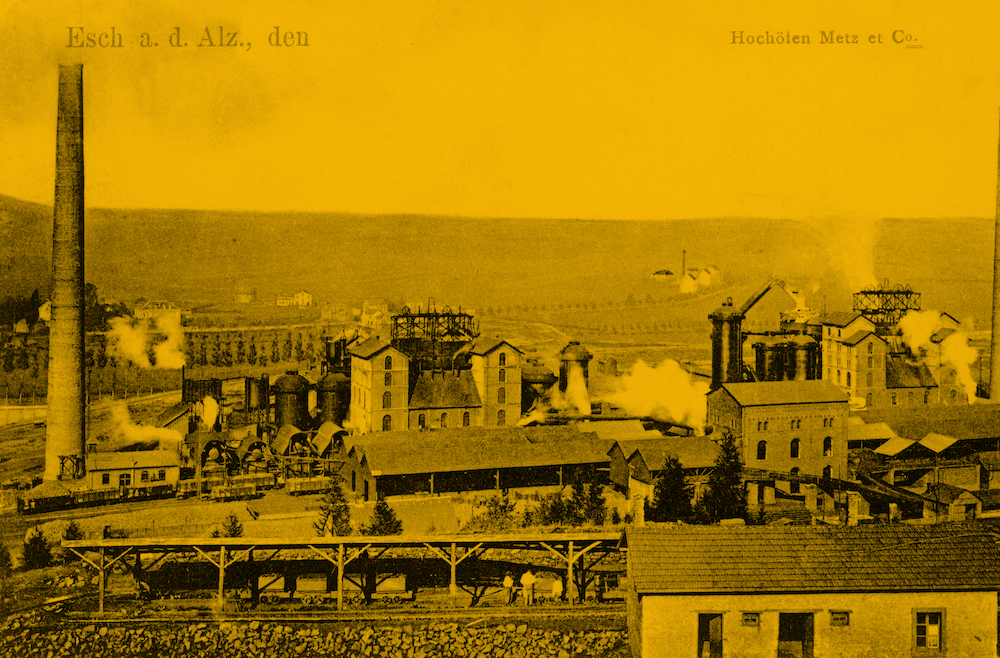
LuxTIME Seminar Series
Johanna Drucker : 9.06.2021
Information visualization and Interpretation
This talk addresses the need for graphical approaches suited to interpretative work, particularly in the humanities. It sketches some of the theoretical principles that justify the creation and use of non-representational and affective methods. Beginning with a discussion of the limitations of standard conventions for visualization that emphasize discrete, well-defined, unambiguous graphical features, it argues that this reductive vocabulary is not well-suited to either display or production of interpretation, which is frequently characterized by ambiguity and complexity. Drawing on visual methods from the fine arts and architecture, it suggests augmentation of the standard conventions, but also, some rethinking of premises and principles to move beyond declarative modes of display.
Maxime Derian : 11.06.2021
Industrial Past of Luxembourg: challenging visualisation of past data through an interdisciplinary approach.
LuxTIMEaims at building interdisciplinary framework for the study of “big data” of the past in Luxembourg and design a digital framework for the creation of web app and virtual reality (or augmented reality) experiences.
The subject of Luxembourg’s industrial past is an interesting entry point to weave a unique scientific ecosystem challenging the access and visualisation of past data through an innovative and interdisciplinary approach combining history, statistics, ecology, computer science (UX design, data visualization, image processing, AI and big data), and social sciences.
The contribution of digital anthropology as a possible “transdiciplinary bridge” since it is the study by human observers of the traces of previous human activities (which created the current situation) by designing digital real time interfaces linking the past and the present. This anthropological approach acts in synergy with the historical approach, in particular by using the historical methodology of data collection and recovery of archived sources.
Philippe Buckland : 16.06.2021
SEAD – The Strategic Environmental Archaeology Database – a research data infrastructure for understanding the past
SEAD is an open access database and website designed for the management and dissemination of archaeological science data. It can essentially store anything that can be counted or measured, but has a focus on data from environmental archaeology and palaeoecology. These mainly include fossil insects and plants as well as geochemical properties. The system is being further developed for data from tree rings and animal bones at the moment. The target users are researchers familiar with these data types, and the website is designed for exploratory data analysis rather than archive retrieval. There are also machine orientated systems in the background for linking the data to other databases, such as the European infrastructure for archaeological data ARIADNE+ and the semantic exploration system DataARC. This presentation will give an overview of the system, the thinking behind it, and our plans for the future.
Gary W.Miller : 18.06.2021
Using the exposome to better understand the impact of the environment on health
The field of genetics has made extraordinary advances over the past century. The combination of traditional inheritance studies à la Gregor Mendel and Sewell Wright combined with the superb genomic technologies has brought historical observations to molecular understanding. Further efforts are underway to uncover the missing heritability that remains from inheritance studies. This studies are needed and well-justified. However, we would like to make the case for the missing everything else. We know that the human phenotype is a combination of our genes and environment. We have developed a superb understanding of the genetic component, but the environmental component lacks a similar level of resolution and understanding. Enter the exposome. The exposome represents the cumulative measure of our environmental exposures and corresponding biological responses across the lifespan. It covers the non-genetic contributors to health and disease. If investigators from genetics and the emerging field of the exposome work together we can fill in the gaps of missing heritability, but also the missing information that leads to the phenotype. Understanding our phenotype, disease causation, and disease progression will require a complementary approach that includes the genome and exposome. Dr. Miller will discuss the history of the exposome concept and how current technologies are making it possible to conduct large-scale exposome studies.
Dominique Santana : 21.06.2021
A Colônia Luxemburguesa
Based on her historical research, Dominique Santana will present a transmedia project with the title “A Colônia Luxemburguesa”. The interactive documentary she worked on and its participatory multimedia installations unearth the fascinating one-hundred-year old story of steel-framed trajectories from Luxembourg to Brazil from different angles and across different platforms.
Ariane König : 27.10.2021
Can citizen science complement official data sources as evidence-base for policies and practice to improve water quality?
In this presentation we will gaze into the future to explore whether citizen science has the potential to serve as a non-traditional source of environmental data, and to provide actionable information relating to environmental and human health, with a focus on water quality. We ask in what ways can citizens meaningfully complement current official and expert-driven data production processes? The presentation develops a framework that helps to explore the environmental data production process in relation to different purposes of environmental policies, knowledge production processes and related action. The analysis is based on first results of a pilot project work with engaged citizen volunteers to solicit data on water quality with a focus on its nutrient content.
Kimberly Coulter : 23.11.2021
Environment & Society Portal:
The Environment & Society Portal (www.environmentandsociety.org) is an open-access publication and discovery platform for environmental humanities, based at the Rachel Carson Center for Environment and Society in Munich and funded by the German Federal Ministry for Education and Research. As the Portal’s founder and former director, Dr. Coulter will share lessons learned in setting up the project and steering its growth over a decade of rapid change in digital history attitudes and practices. In particular she will reflect on the management challenges of defining goals and designing for discovery.
Inna Ganschow : 25.01.2022
The parallel life behind the barbed wire in the Minette region in 1942-1944:
The lecture by Inna Ganschow in the framework of LuxTime Machine is about two years in the history of the Minette region, from 1942 to 1944. The reconstruction focuses on the life in the camp of the female forced labourers who had been deported from the Soviet Union for slave labor in the steel industry of Luxembourg. “The big data of the past” as much as the so called ego-docments like letters, photos and memories after the liberation allow to get to the bottom of the daily life of thousands of the Soviet teenagers, who lived directly at the plant in the barracks behind the barbed wire, were subjected to an enormous workload and had neither enough food nor free time.
Erin Baker : 08.02.2022
Utilizing Multidimensional Measurements to Assess Chemical Exposure and Lipidomic Alterations
Erin S. Baker, Kaylie I. Kirkwood, James N. Dodds, Melanie T. Odenkirk, Rebecca Beres, Michael Doyle
Upon completion of the human genome project, it was determined that greater than 90% of human diseases are due not solely to a person’s genetics but a combination of genetic factors and non-genetic environmental influences. While genetic factors can be readily assessed using rapid genome sequencing technologies, measuring environmental factors is much more challenging. To date either direct or indirect measurements of exposure are often employed for their analysis. In direct measurements, specific xenobiotic compounds are analyzed in environmental samples or in biofluids and tissues, however, many xenobiotics are often excreted before responses even occur. Indirect analyses evaluate how biological processes change due to chemical exposure using one or more complementary omic techniques such as transcriptomics, proteomics, metabolomics or lipidomics. This presentation will demonstrate how combining liquid chromatography, ion mobility spectrometry and mass spectrometry (LC-IMS-MS) separations for direct xenobiotic measurements and indirect multi-omic evaluations enables an in-depth understanding of molecular responses occurring due to chemical exposures.
Kaarel Sikk : 26.04.2022
Towards exploration of prehistoric deforestation with complex systems approach & data collected by Luxembourgish archaeological prospectors…
Christian Pfister and Heinz Wanner : 17.05.2022
Climate and Society in Europe. The last thousand years
Since the transition from slow to rapid global warming around 1989, it has become clear that the climate system today is predominantly driven by human activities. The two speakers – Christian Pfister is an environmental historian, Heinz Wanner a climatologist – provide for the first time a review of seasonal conditions over the last thousand years, discuss the main driving factors, and show how climate variations have affected population and economic history in addition to epidemics and war.
The European climate of the last 5000 years was characterized by a slow temperature decline with glacial advances. The last 1000 years saw the transition from the warmer Medieval Climate Anomaly to the Little Ice Age, which was mainly characterized by cold winters until man-made warming in the 20th century. In addition to natural fluctuations, groups of volcanic eruptions and periods of weak solar radiation were responsible for cooling.
Prior to industrialization in the 19th century, warm summer months drew population and economic growth, namely in the 13th and mid-16th centuries. Epidemics, notably the plague in the 14th and 15th centuries, cold-wet summer half-years, notably in the late 16th century, and European wars, notably the Thirty Years’ War, decimated the number of people in Central Europe. A long population wave began in the wake of the organic agricultural revolution in the 18th and early 19th centuries. In three respects we are now back in the world of our ancestors: Climate development becomes increasingly threatening, epidemics are back and a dangerous war is raging in Ukraine.
Martin Schmitt : 27.06.2022
The international migration of trees – How to write a data-driven environmental history of the 19th Century?
Environmental sciences are accustomed to work with big data sets, be it biology, geology, climate science or forestry. In their analysis, they often refer to longer periods of time which are usually of concern to historians, linguists or archeologists. Two findings are intriguing here: In many cases, environmental sciences tend to underestimate the results by humanities scholars because their research questions differ. In turn, humanities scholars have rarely used the digital methods ubiquitous in environmental sciences so far – even if they are doing environmental history.[1] In my talk, which will be the starting point for a new research project at the Technical University of Darmstadt, I want to bring together both worlds by using digital humanities for analyzing past environmental processes and their cultural contexts. I will focus on the 19th Century and will ask how to write a data-driven environmental history of that time. My object of research are foreign tree species in Prussia and Spain.
In this inquiry, data is playing a key role. Data is never “raw”, as Lisa Gitelman showed.[2] This holds especially true for historic environmental data which was always recorded in a specific cultural and technical context. For example, grand developments like colonialism, nation building, the emergence of modern science or industrialization left their marks in the way historic data was produced. Importing foreign trees into European states was a delicate process in the late 19th Century. They were not only seen as an economic chance for rapid resource production but considered as a danger for the national landscape. Knowledge about them was scarce. Forestry researchers in both Spain and Prussia conducted a close data surveillance about foreign trees, about their origin, their seeds, their behaviour and “integration” into the “vernacular” environment. Also the language is telling here and could be analyzed through data analysis.
In the 20th Century, data on past environmental processes was often modeled according to certain understandings of the world.[3] How can historians deconstruct this process of data recording with the help of DH tools? What biases did the traces of colonialism, for example, leave in the data of the environment? How can they and environmental scientists nevertheless work with this data? Because as important as deconstruction of data is, it is highly important to not lose analytical strength but to strengthen data analysis. What tools are helping us to explore patterns in historical environmental processes reflecting the double nature of data? Using forest research stations and their field experiments from Central Europa as a starting point, this talk will suggest ideas to analyse the delicate co-construction of environment, data and cultural reactions in the 19th Century through the novel use of digital humanities. Mainly, it will discuss the different data types available in the sources and suggest ideas to work with them. Forestry was an early producer of environmental data, making foreign trees an excellent subject of study – even though their perspective was highly influenced by themes of resource production and economic constraints.
[1] Notable exceptions are Posthumus, Stephanie/Sinclair, Stéfan/Poplawski, Veronica: Digital Environmental Humanities: Strong Networks, Innovative Tools, Interactive Objects, in: Resilience: A Journal of the Environmental Humanities 5/2 (2018), p. 156–171.
[2] Gitelman, Lisa: “Raw Data“ is an Oxymoron, Cambridge, MA/London 2013.
[3] Cf. Benson, Etienne: Surroundings: A History of Environments and Environmentalisms, Chicago 2020, Ch. 2; Sörlin, Sverker/Wormbs, Nina: Environing Technologies: A Theory of Making Environment, in: History and Technology 34/2 (2018), S. 101–125.
Richard Keim : 05.07.2022
Tree rings reveal historic eco-hydrologic processes in coastal forested wetlands
In the delta of the Mississippi River, Louisiana, USA, historic rapid changes in landscape and hydrological processes controlling ecosystem structure make it difficult to reconstruct how ecosystems respond to change and how they are likely to respond in a future of climate change and sea-level rise. Tree rings from coastal baldcypress trees are useful for identifying specific processes that separate forested wetlands from unforested wetlands, and they reveal hydrologic connections that are otherwise not apparent. In this landscape, ecological chronologies are overlayed on major changes caused by river management, and are important datasets for planning ecosystem management and restoration into the future.
Published papers
Aurich D, Miles O, Schymanski EL. Historical Exposomics And High Resolution Mass Spectrometry. Exposome. 2021;1(1):1-15. doi:10.1093/exposome/osab007
Aurich D, Horaniet Ibañez A. How can data visualization support interdisciplinary research? LuxTIME: studying historical exposomics in Belval. Front Big Data. 2023;6:1164885. doi:10.3389/fdata.2023.1164885
Arp HPH, Aurich D, Schymanski EL, Sims K, Hale SE. Avoiding the Next Silent Spring: Our Chemical Past, Present, and Future. Environ Sci Technol. 2023;57(16):6355-6359. doi:10.1021/acs.est.3c01735
Aurich D, Horaniet Ibanez A, Hissler C, et al. Historical Exposomics: A Manifesto. Exposome. 2023;3(1):1-35. doi:10.1093/exposome/osad007
Aurich D, Diderich P, Helmus R, Schymanski EL. Non-target screening of surface water samples to identify exposome-related pollutants: a case study from Luxembourg. Environ Sci Eur. 2023;35(1):94. doi:10.1186/s12302-023-00805-5
If you would like to attend or speak at one of our events or just to know more about the project, do not hesitate to reach out to us using the form below.
Copyright © Université du Luxembourg 2021. All rights reserved


